The campus of the University of Texas at El Paso is a beautiful place. You can look south into Mexico, a scant half mile away. It’s got rocky hills rising up between buildings and between stadiums (stadia?), and a utterly unique campus architecture based on the Himalayan nation of Bhutan. Here’s a look at the rocks beneath the university…
The main rock type is a porphyritic andesite – probably a hypabyssal (shallow) intrusion. It’s got phenocrysts of feldspar and hornblende in great profusion:
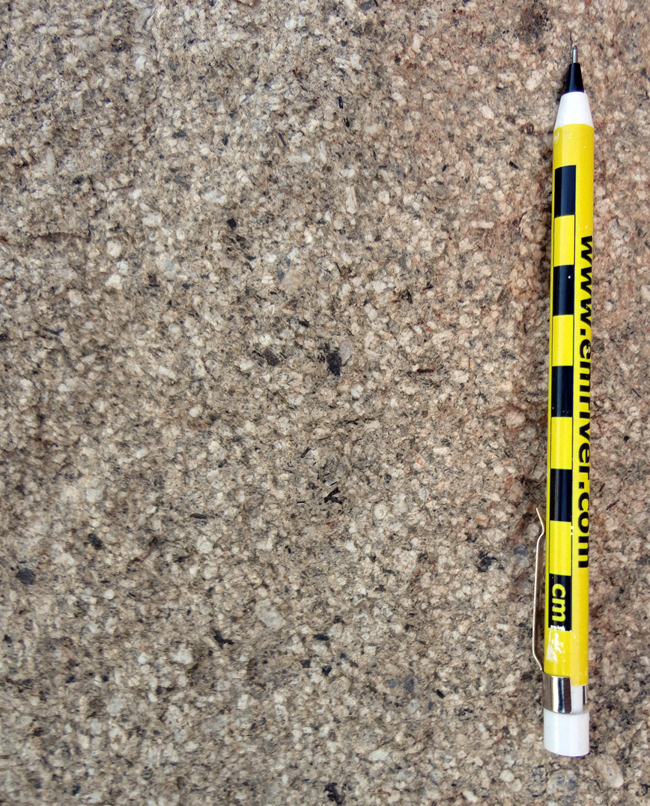
According to Josh Villalobos of El Paso Community College (and a graduate of UTEP), it’s 47 million years old (Eocene), a shallow pluton related to the subduction of the Farallon Plate. Guess what it’s called? That’s right, the Campus Andesite. It’s not limited just to the UTEP campus, but is found in several intrusive masses throughout the region.
I spotted a couple of xenoliths “floating” in this wad of (former) magma. Here’s the bigger of the two:
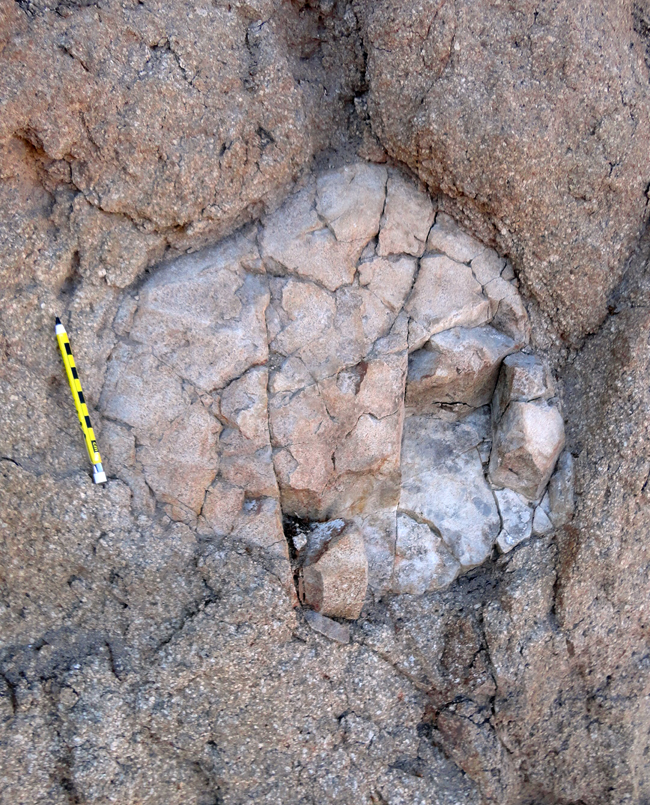
The andesite is cross cut by several joint sets, including some that are mineralized into veins:
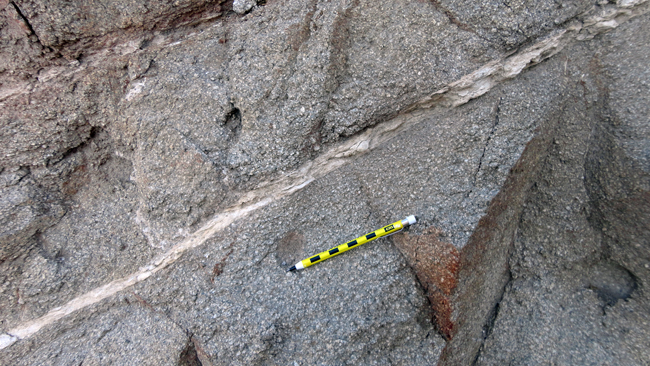
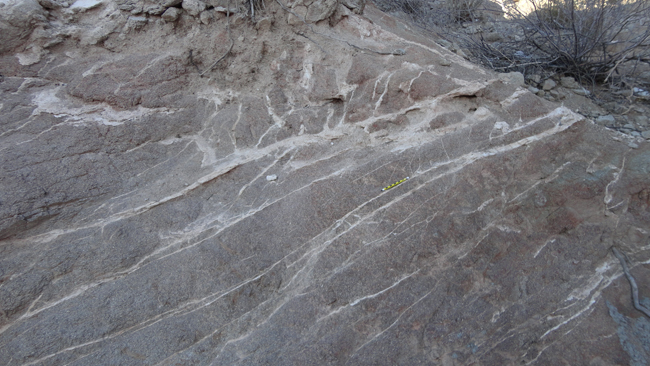
Whether or not there are white veins sealing these fractures shut, you can see the influence of the joints on fluid flow, since there is rusty staining of the andesite immediately adjacent to the fractures, but not so further away from the cracks, where the andesite remains an undisturbed gray in color:
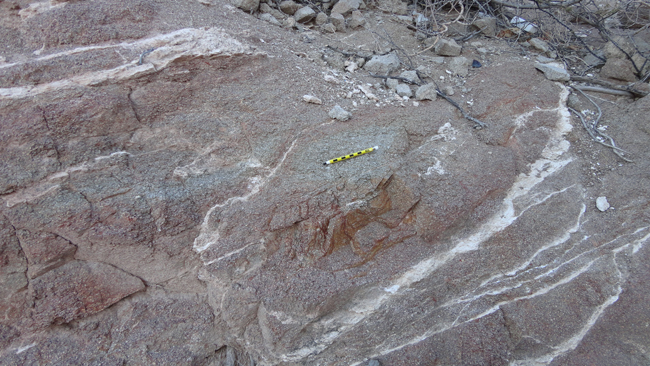

Pretty good stuff. I wish we had outcrops on campus at NOVA.

0 thoughts on “A campus underlain by porphyritic andesite”